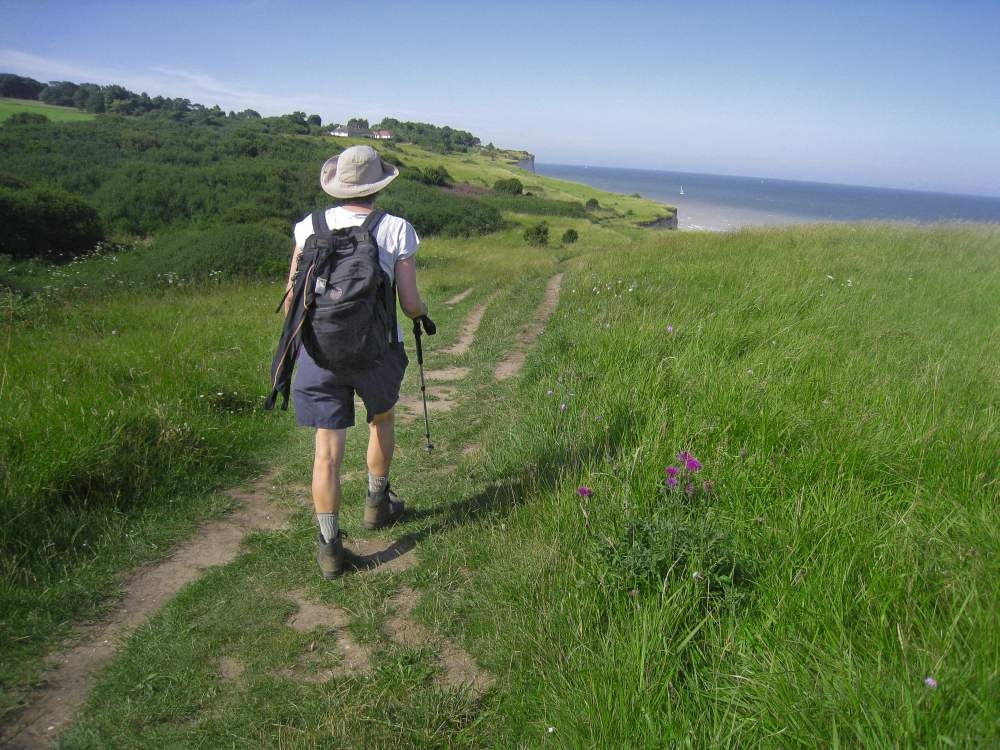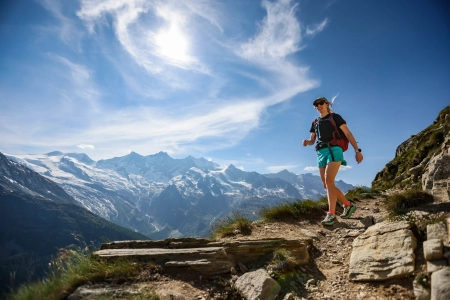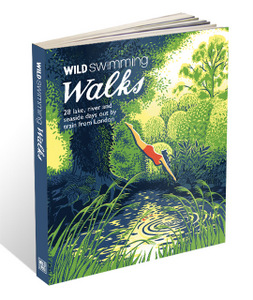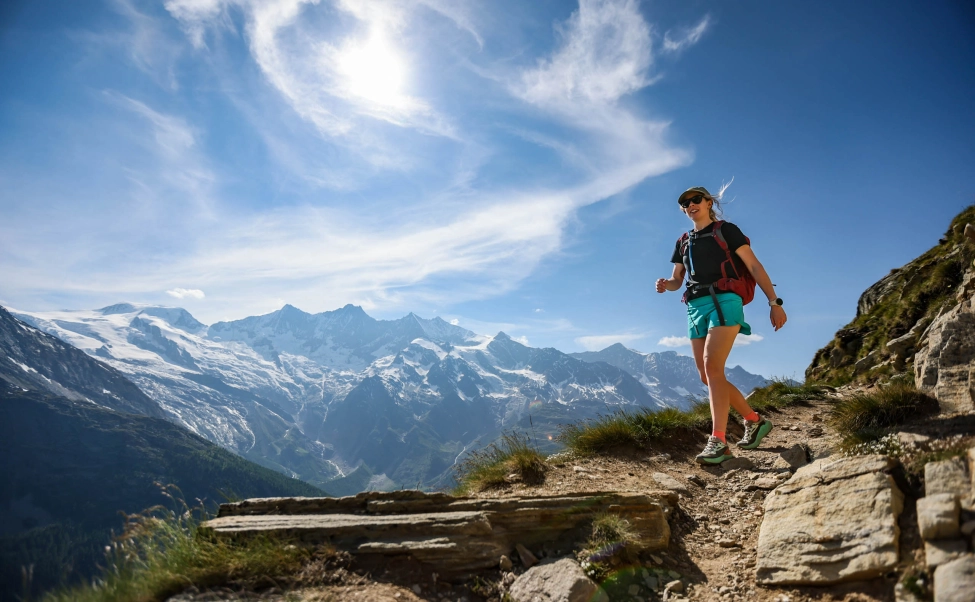- Details
- Written by: Mike Walker
Enjoy your first swim in Dover Harbour. Every year hundreds of Channel swimmers train here and then wait for favourable weather to attempt a crossing. Captain Matthew Webb made the first recorded Channel swim in 1875, taking 21 hours 45 minutes. Gertrude Ederle became the first woman to succeed in 1926 and broke the then record with a time of 14 hours 39 minutes. Now there is a constant stream of swimmers, 15 pilot boats and two organisations, the Channel Swimming and Piloting Federation and the Channel Swimming Association, that regulate, certify and advise swimmers. Even during the week you may catch sight of a Channel hopeful among the holidaymakers; we met Rohan More from Pune, India and Avram Iancu, who was hoping to be the first Romanian to complete the swim.
The Dover Museum has a small exhibition on Channel swimming. The White Horse pub in St James Street/Castle Hill is worth a visit: hundreds of successful swimmers have signed their names on the walls and ceiling. An evocative sculpture (On the Crest of a Wave 1995 by Ray Smith) on the seafront celebrates all the swimmers, while Matthew Webb has his own statue a little further east.
The past is vividly present in and around Dover. Priory Station is named after a 12th century monastery that was dissolved by Henry VIII. Dover College, a public school founded in 1871, took over and restored the remaining Priory buildings and the walk passes close to the flint-built refectory. A brief diversion takes you to the Roman Painted House, a house demolished by the Romans to make way for a new fort. The wall paintings that survived by a fluke are said to be the best in Britain, although it's not quite Pompeii.
Dover Castle towers over the town and thousands of years of history are contained within its walls. A little further on the ruined lighthouse was built by the Romans and there is a Saxon church. The site has been a fort from the Iron Age to 1958 and tunnels deep in the chalk were used from Napoleonic times until the Cold War.
The juxtaposition of the past and the present in Dover is sometimes quite brutal. You approach the Roman Painted House through the scrappiest of car parks. In Cannon Street the broad, five-storied west tower of the church of St Mary makes a striking contrast to the cafés, stores and charity shops. The balconied sea front houses at Marine Parade now look out over four lanes of container lorries straight off the ferries. Just behind is East Cliff, a street of small houses cowering under the great slabs of white chalk that rise steeply behind. Enjoy this view of the chalk from below: for most of the walk you will be fighting vertigo as you peer over the edge to glimpse it beneath you.
As you walk along the cliff top pay tribute to two great British institutions: our much-maligned planners and the National Trust. Between them, they have kept some stretches of coast free from creeping development. The best parts of the walk are on National Trust property where flower meadows in July were full of wild carrot, marjoram, viper's bugloss and ladies' bedstraw.
From the eyrie path you come to a wide natural amphitheatre. In this apparently flawless landscape, it is surprising to read that an aerial walkway used to take coal down to the harbour from Tilmanstone Colliery seven miles inland. Coming down into St Margaret's at Cliffe you may want to visit the beautiful Pines Garden and Museum, which has displays about the role this stretch of coast played in the two world wars.
The pebble beach between wooden groynes at St Margaret's offers the second swim of the day. The sea current runs strongly from left to right and the groynes were built to slow the shifting of the shingle. Swimming is best from mid to high tide - at low tide, rocks and seaweed-covered clay make it tricky. Beware of another danger: mobile phone signals are more easily received here from France than the UK, which can make your calls unexpectedly expensive.
Before ascending to the cliff tops again, walk along to see the white modernist houses and the pitched roof house, White Cliffs, beyond. This was once the exclusive hideaway of Noel Coward. Ian Fleming bought White Cliffs in 1951 and made it his weekend home for the decade when he wrote most of the James Bond books.
Once back on the cliffs, a slight diversion is required to visit the Obelisk, which is a memorial to the Dover Patrol, part of the Royal Navy charged during the First World War with preventing German ships from reaching the Atlantic through the English Channel. After leaving the National Trust's Bockhill Farm, the view north along the long shingle beach to Deal is revealed. Your time in the rarefied world of the cliffs is over.
A fascinating coastline lies ahead. The sea has thrown up a vast bank of shingle and out to sea are the Goodwin Sands, a semi-submerged reef that protects the coast from the full force of the waves. These sands are the stuff of legend - and eccentric fact. From the 19th century to early this century, cricket was played on them during extreme tides when the sand was exposed. Along the shore there are boats pulled up on the shingle and wooden fishermen's huts. The hard path behind the beach passes a string of quirky houses that look as if they were designed for retired sea captains; some even have flagpoles. Beyond Kingsdown, the shingle has been colonised by evergreen Holm oaks, a strange sight but not one favoured by naturalists who brand them alien invaders. You can swim anywhere along this endless shingle strand, but beware of currents; also, there are no lifeguards.
At Walmer there is a wide green where an information board records that Julius Caesar landed here in 55BC. About 1,500 years later, Henry VIII, having divorced his wife Catherine of Aragon, feared the Catholic powers of Europe might attack so built three castles to protect the sheltered landings behind the Goodwin Sands. Only ruins remain of Sandown, but Walmer and Deal castles are still standing, open to the public and worth a visit: Deal for its military interest, Walmer for its gardens. On reaching Deal visit the Timeball Tower, which initially conveyed semaphore messages for an anti-smuggling force. In 1853 the tower was converted to drop a ball controlled by a telegraph signal from Greenwich at exactly 1pm each day, so ships could set their chronometers, needed for calculating longitude.
Deal itself is a delight: painted houses line the sea front. Take the last of your swims on the beach in front of Deal Castle, with the view bounded on one side by the pier and on the other by the cliffs of St Margaret's. On a warm sunny evening nothing could be more inviting than a pint on the green in front of the King's Arms - except perhaps fish and chips on the end of the pier.
Dover to Deal wild swimming walk, Kent directions
1 Dover
Turn right out of Dover Priory station and follow the road until it joins Folkestone Road, B2011, where you continue ahead. Turn left into Effingham Street to see the priory refectory, now part of Dover College. Turn right into Saxon Street, noticing the well proportioned mid 19th century houses. Turn left at the end to reach the pedestrian crossing, then turn right towards the roundabout. Turn left into Priory Road, then right into Biggin Street, which becomes Cannon Street. Follow down to the market. Divert right down New Street if you want to visit the Painted Roman House. At the market square, cross diagonally left past the fountain. The museum is ahead to the right. Go ahead on King Street and down and through the underpass, noticing the tiles depicting ships that would have used Dover as a port through the ages.
1 mile
2 Dover beach and cliffs
Emerge from the underpass, cross the circus with a statue in the middle and head for the Channel swimming sculpture on the sea front. Turn left and the last section of beach is the Channel swimmers' beach, with the Matthew Webb statue a little further on. This is the first possible swimming place. Walk along the sea front and, after the Premier Inn, cross by the traffic light, noticing the houses on Marine Parade. Go ahead and right into East Cliff. You are now on the Saxon Shore Way, which is intermittently waymarked all the way to Deal. At the end of East Cliff pass the terrace of white houses, then follow the path that gradually climbs up, with the chalk cliff on your left. The path goes under the A2. Take the right-hand flight of steps. At the kissing gate take the white chalk path to the right. Follow this path until it emerges into a grassy area with benches.
2 miles
3 On the cliff tops
Stray left to pick up a path that runs along the fence with a car park beyond. Pass the Visitor Centre. Continue on the white chalk path. Follow the pink National Trust signs round the green amphitheatre and continue along the coast path.
3 miles
4 To St Margaret's at Cliffe
The path leads up to the lighthouse then heads back towards the coast on a chalky white lane. Follow the Saxon Shore Way through a kissing gate on the right and walk through another flower-filled meadow, then out through a kissing gate. Follow the shady lane past the Pines Garden, bear right down to the beach at St Margaret's at Cliffe and right again at the road.
4 miles
5 Cliff tops again
Look for the path that goes up from the beach quite near where you joined. At the top you may want to divert slightly to see the Dover Patrol Memorial. Keep following the path along the cliffs.
6.25 miles
6 Kingsdown to Deal
The path leads down to a road. Follow the road to Kingsdown (or walk on the shingle). Turn right along a line of houses culminating in the Zetland Arms. Follow the path in front of the houses facing the beach. Keep following this path all the way until it becomes a road shortly before Deal Pier, passing first Walmer then Deal Castles. For access to Walmer Castle, cross to the road parallel to the path just beyond the castle and take a side road into the grounds. For Deal Castle turn left into Marine Road, just before the castle, and cross the car park diagonally.
9 miles
7 Deal Pier to Deal station
At the roundabout by the end of the pier turn left down Broad Street. This becomes King Street. Follow this road until you see Deal station on the right.
9.5 miles
Route reproduced with kind permission from Wild Swimming Walks, book available now for only £14.99 from wildthingspublishing.com














